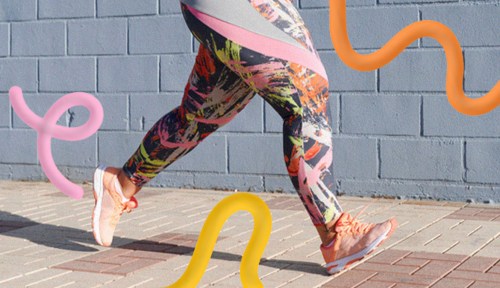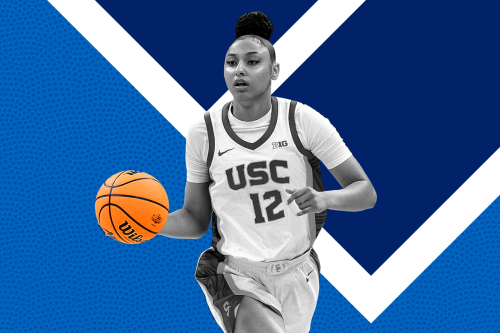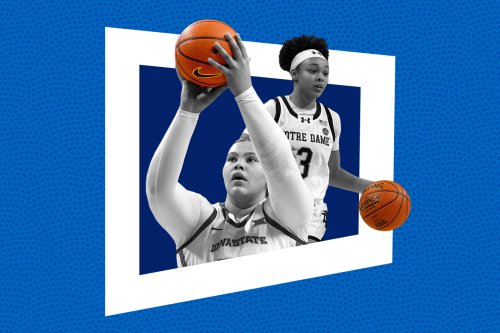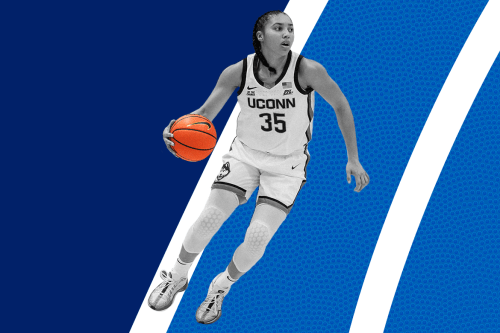This Is What It’s Actually Like Being One of the Last Runners To Cross the Finish Line
The inspirational story of marathoner Bailey Quinn shows that you shouldn’t let identifying as a slow runner keep you from a challenge.

As Bailey Quinn approached the finish line of the New York City Marathon at around 8:15 p.m., she expected the conclusion of her race to go the same way the last 10 or so miles had: Mostly private, and exhausted. She planned to celebrate with her boyfriend in person and her mom over FaceTime. Instead, for her final strides, she was greeted by a roaring crowd, people yelling her name, lights, cameras, and what felt like a party just for her.
“Oh my gosh, there’s people, there’s a ton of people, there’s a finish line and cameras and videos,” Quinn remembers realizing as she approached the finish line. “It was probably one of the coolest moments of feeling like, wow, like this event has been going all day. People started running at 7:30 in the morning. And there were people still out here for me.”
The moment went viral, helped along by the fact that Quinn was wearing a rainbow tutu and an exuberant, infectious smile. As seen in a video posted on the NYC Marathon’s Instagram, Katy Perry’s “Firework” plays and Quinn pumps her fists and yells “Yes, yes!” You can’t help but cheer for her.
Despite Quinn’s obvious elation in the video, virality has its drawbacks. Comments on the video of Quinn’s finish criticized her end time and questioned the validity of her getting a spot in the marathon. While there is a burgeoning movement supporting slow runners and the need for pace inclusivity at races, the Instagram comments play on a fear fellow slow runners or marathon novices may have of finishing later in the day or of coming in last.
Quinn understands those fears, but doesn’t think anyone should let that stop them from experiencing what she did. “It is a very, very valid fear, ‘I don’t wanna be last, I don’t wanna be the person singled out,’” she says. “But it comes down to, when you look back on your life and your accomplishments, is it really gonna sit with you and bother you that you finished last? Or are you just gonna be more excited to tell friends, family, your kids, I did this. I did it as me.”
How Bailey Quinn ran her race with perseverance, support, and joy
The 2022 NYC Marathon was Quinn’s first race ever. She hadn’t done a 5K, 10K, or a half. She didn’t even consider herself a runner. But she wanted to take on the personal challenge, to raise money for Team for Kids—a charity that funds New York Road Runners’ youth programming—and to have fun.
At the time, Quinn was a fourth-year medical student (she is now a resident in pediatrics). She did have some time goals initially, but an injury forced her to reassess her motivations and decide that her goal was to finish, and to do it for herself.
Gold Medal Couple Tara Davis-Woodhall and Hunter Woodhall Talk Marriage, Motivation, and Their Next Chapter With Nike

Coach Kara Lawson Wants You to ‘Handle Hard Better’—and Here Are 3 Ways to Do Just That

JuJu Watkins Leaves March Madness With ACL Tear—and This Knee Injury Is More Common Than You Think

It was a moment of reframing Quinn had been through before. She played several sports growing up, and describes finishing medical school as a quest to finish “21st grade.” She identifies as an endurance athlete since she bikes and swims (and now runs) long distances. But in 2014, she realized that to maintain a love of movement, competition could no longer define her relationship with exercise. That was when she decided to bike across the country.
“There was a point in my journey with health and wellness and athletics that I sat down and asked myself, Who do I do this for?” Quinn says. “Do I care if I’m fast? No. Do I care if I’m beating other people? No. I care that I showed up for me and I did something I deemed worthy.”
That spirit, the confetti canons of marathon spectators, and pure adrenaline carried Quinn through the first half of the marathon. She describes the beginning, running through Brooklyn, as a time of pure joy, and that she didn’t even start to feel the struggle of running a marathon until mile 12.
In the middle of the race, the realities of marathon running at the back of the pack—the hours of physical exertion, and the fact that there were fewer and fewer people on the road—intensified.
“There were moments that I was like, ‘Oh boy, I am so far behind everybody else. How am I getting through this?’” Quinn says. “I knew I would be a slow-goer. I knew I was gonna just stick to my strategy around my race. But it certainly was daunting.”
The key to getting through it was attitude, support, and preparation. Quinn reminded herself that she didn’t care that she was behind everyone else; she just wanted to finish. Her boyfriend met up with her at points throughout the route to give her hydration, snacks, and encouragement. Late in the race, strangers still watching shoved orange slices into her hands. (Quinn yelled “I love you” in response.) And at all times she kept electrolytes and fuel with her.
“An aspect of being a last finisher is that preparedness and that awareness of your situation,” Quinn says. “I knew in my head, I need this many electrolytes, this many powders, because realistically after mile 12 to 13, I might be alone with no first aid, no rest stops. And I need to be physically safe if I want to finish this race.”
Accomplishing that goal was not a given. A miscommunication with her boyfriend caused them to miss a meetup in the late teen miles, so she felt the isolation and struggle build up. At mile 23, when they did reunite, she said she didn’t know if she could do it; she was too gassed. Her boyfriend plied her with fuel and encouraged her to just keep moving. One motivator was continuing to take selfies at every mile—even when the mile markers had already been taken down—to bask in each moment of achievement, and spur her on to make it to the next one.
“I really love documenting the journey even when the journey is painful,” Quinn says.
Finally, the finish came, and the insecurity, doubt, and fatigue of the previous few hours washed away. “No one was looking at times, no one was telling me what number I finished,” Quinn says. “People were just like, ‘Oh my God, you finished.’ And I was like, ‘Oh my God, I did.’”
Her advice for back-of-the-pack runners
If you’re a “slow runner” or novice racer contemplating a race like a marathon, fears of finishing last, of running alone, of feeling left behind aren’t unwarranted. Quinn advises that you should be aware of the realities, and plan to have adequate support in the face of them—namely, in the form of a support person or people along the way. Know that amenities might not be there anymore, and you may have to complete the final miles on the sidewalk (while stopping for traffic), if you finish after the official cut-off time.
Yet there are also some perks: Barriers get taken down, so you can actually celebrate with friends and family at the finish. At some races, support organizations like Project Finish at the NYC marathon will make an end-of-day finish line a party. And Quinn calls the joyous attitude of fellow late finishers and their support people “unparalleled.”
But the most important determinant of whether a race is something you want to take on is your motivation. What are you there for? What are your goals? Outside of the paradigm of finishing first, or finishing within a certain time, what does a “win” look like for you?
“It’s never risk-free to put yourself out there,” Quinn says. “But I really challenge those people with self-doubts to have them challenge [themselves with], How much fun can I make this? Because it really is just all about what you make it. Learning how to dance in the rain, and all that.”
Sign Up for Our Daily Newsletter
Get all the latest in wellness, trends, food, fitness, beauty, and more delivered right to your inbox.
Got it, you've been added to our email list.







